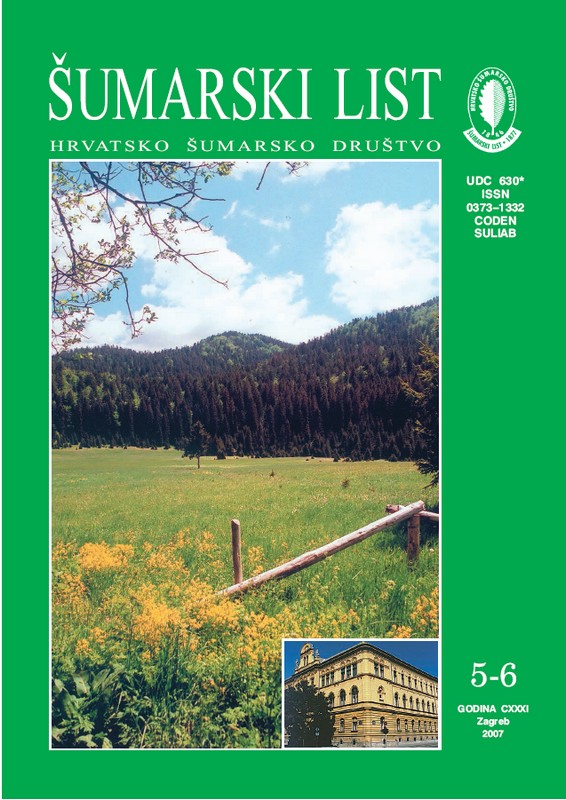Summary: The following of the European beaver (Castor fiber L.) after its reintroduction in Croatia has been carried out continuously since first individuals were released in 1996. The results of such a paper were data about inhabited sites (active habitats), locations where a beaver has been noticed, traces of its presence, scope and types of activities, the time of the first registration of the activity on the site and removal of beavers. The beaver settled into the area of the management unit “Turopoljski lug” after 1998 upon the completion of the project of its return into Croatia. The research of the influence of this species on the forest ecosystem of the management unit “Turopoljski lug” was published in June, 2006 in a forest stand Genisto elatae- Quercetum roboris Ht. 1938. The researched area is between 16o05’ and 16o15’ of the east geographical longitude and 45o35’ and 45o40’ of the northern geographical latitude on the average altitude between 97 and 109 meters. The complex situated along the river Odra comprises the biggest part of the management unit where beavers spread looking for suitable habitats and own grounds. The paper consisted of the analysis of the number of damaged trees and bushes, representation of certain plant species on the terrain and measuring the damage height and diameter under the damage place. The research was carried out on six parallel transects from 16.50 to 37.80 m long and two meters wide on the mutual distance of 50 meters, vertical on the river Odra, by which the possibility of their mutual intersection was prevented. The length of transects was measured from the bank to the farthest plant which belonged to the transect and where the signs of a beaver’s activity were noticed (bites). All woody species were listed along the whole transect and their damages from beavers were categorised into the following five categories: undamaged plants, freshly damaged, but unfelled plants, freshly felled plants, old damaged, but unfelled plants and old felled plants. The intensity of beavers activity was analysed on a transect 250 meters long, placed 15 meters from the bank, parallel with the river Odra water course. A habitat was put every five meters (the total of 49) of the square meter 10 m2 where the activity of beavers was estimated in the following five categories: 1. no activity, 2. very little activity, 3. medium activity, 4. much activity and 5 very much activity. The percentage of the damaged trees and bushes was determined on the smple of 523 plants, while the measurement of the damage height and diameter under the place of damage was done on the smple of 200 plants. The following plant species were determined: Corylus avellana L., Cornus snguinea L., Fraxinus angustifolia Vahl., Ulmus minor L., Carpinus betulus L., Salix alba L., Rhamnus catharticus L., Crataegus sp., Euonymus europaeus L., Pyrus pyraster Burgsd., Acer campestre L., Rubus fruticosus L. and Quercus robur L.) and Crataegus sp. (12 %). In the smple of examined plants 85.09 % were undamaged, 4.02 % old damaged, 7.65 % old felled, 0.19 % freshly damaged and 3.06 % of freshly felled. Most frequently damaged species were A. campestre (37 %) and Crataegus sp. (12 %). By examining the smple of 200 damaged plants it was established that the average height of damages was 32.57 cm and the average diameter of plants under the place of damage was 3.45 cm. It was determined that beavers move mostly in the zone 15 m from the bank and that there maximum activities were 42 m from the water course.
Key words: activity; damage; European beaver (Castor fiber L.); food; lowland forests; plants |



